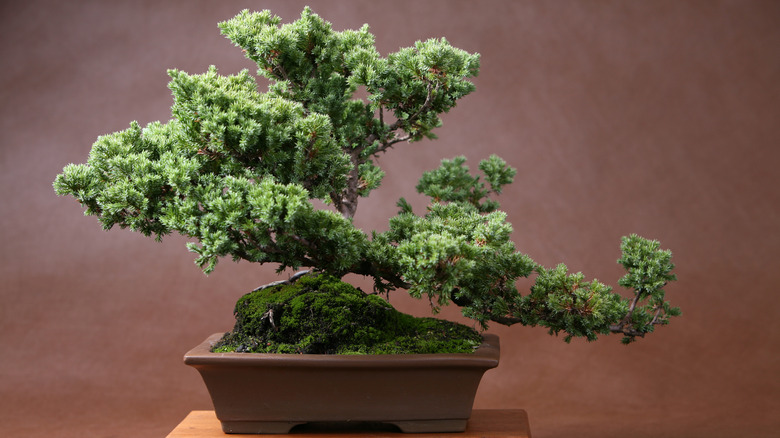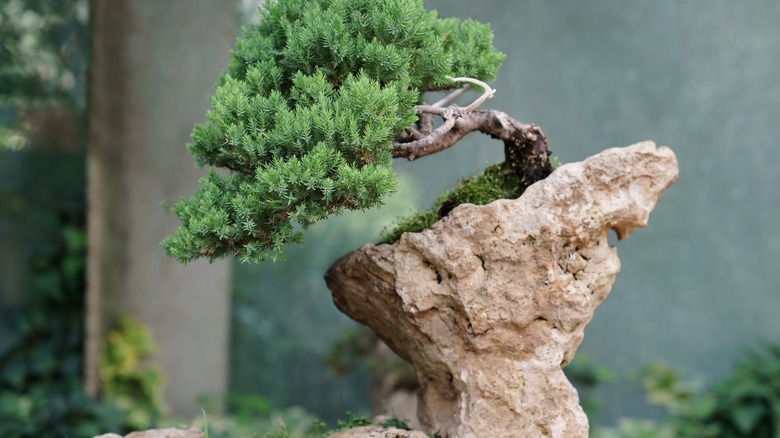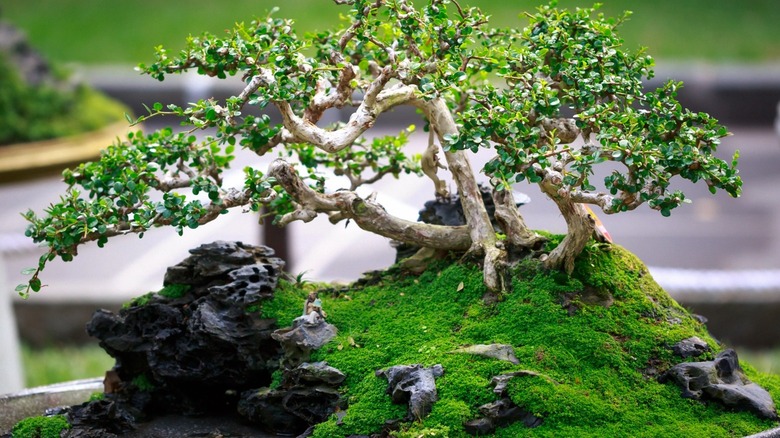The Best Method For Planting A Bonsai In A Rock
The first thing you're going to need if you want to try your hand at growing bonsai trees is a whole lot of patience. As a matter of fact, growing any type of bonsai is actually caring for a perpetual living sculpture. Bonsai is an art form, and takes dedication and a love of nature that goes far above and beyond having the proverbial green thumb. If you have found bonsai to be something you enjoy, you might be interested in growing one ishisuki style, also known as growing in-rock, or on-rock, also known as seki-joju. These, like other methods of growing bonsai trees, take great patience and an acquired skill.
You should have success growing regular bonsai in the formal upright or chokkan style before attempting these types. There are many different styles of growing bonsai, as well as many different species that can be grown in miniature. It takes meticulous care and attention to detail, but it can be fulfilling and rewarding beyond belief when successful. And just in case you were wondering, it does not harm the trees or shrubs to cut and train them in this way. Growing a bonsai specimen in-or-on-rock are two of the more beautiful ways to display them, and although challenging, the results can be stunning. Let's find out how, shall we?
Finding a rock and choosing a tree specimen
The first thing you'll need to find is the perfect rock. You can either take the time to find one in nature, or you can find all types of ideal specimens in one place, and purchase one made by hand and sold in stores that specialize in bonsai growing. You can even find them on Amazon, Etsy, eBay, and other online retailers under bonsai rocks. What you're looking for, generally, is one with plenty of nooks and crannies for roots to grow in and through. You are looking for something interesting and worthy of being a conversation-starter on its own, and perfect for the scene you want to create.
You will also need to choose the tree specimen, but keep in mind that the rock typically dictates the type of tree you choose. For example, a smooth, round rock is indicative of a water scene, where you could use a willow tree nicely. A pointy, slanted rock brings to mind a jagged cliffside, where use of pine or juniper trees would be a great choice. Deciduous trees and varieties that change colors with the seasons can be used for aesthetics. You will need to have a specimen with long roots that are at least a year old and healthy, to start with. Find the best view of the rock, so you can picture how you're going to display the tree on it, and have an idea of the results you're looking for.
Additional growing tips
First, be sure you're starting in the early springtime. You'll also need the substrate or soil mixture, which will vary depending on the species of tree you're growing and the climate conditions you're dealing with. Depending on whether your tree is deciduous, coniferous, or pine, use an appropriate specialized bonsai soil mixture. It will be important to keep the roots moist and fertilized.
Generally, you place the rock inside of a shallow container with a couple of drainage holes. Put a mesh screen down over the holes first to keep the soil from washing away. You will attach a few wires to the rock, to ultimately help train the roots to the rock. Use a waterproof adhesive, such as a fast-drying epoxy resin, and glue the rock down in the container to keep everything secure. After shaking out the roots, position them using the crevices and nooks to your advantage.
Anchor the tree to the rock with the training wires. Be sure to allow some of the roots to hang down into the soil of the container. This is easier than trying to grow on a rock without a pot. Prune the tree right afterwards, as this will reduce the need for nutrients from the root system. Don't wait more than a month before starting to fertilize it, and water it regularly. As you can imagine, the possibilities are endless for these beautiful, living, breathing sculptures. What a wonderful way to create art!


